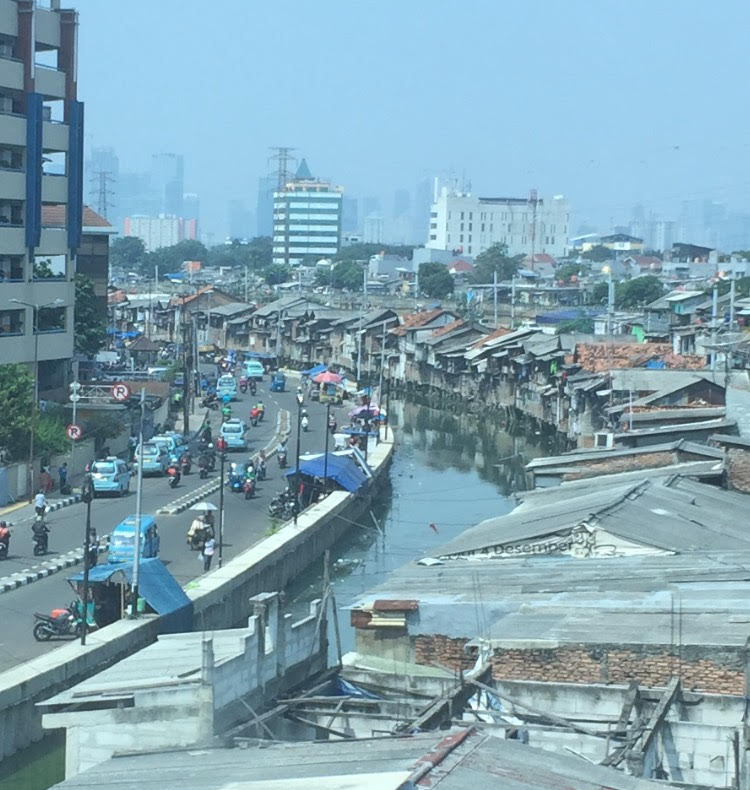“Disagreement is not the conflict between one who says white and another who says black. It is the conflict between one who says white and another who also says white but does not understand the same thing by it.” – Jacques Rancière
Besides "selamat datang" for "good morning" and "tarima kasi" for "thank you", the first word that I learned in Bahasa Indonesia was "kampung." On one of our first days in Jakarta, we attended a conference on flooding at Tarumanagara University. In many of the presentations, local researchers used "kampung" without translating it, marking it as a significant word. We were told that they were referring to slums lining the rivers of Jakarta. These slums are at the center of political conflict, as the residents are being accused by politicans of causing flooding in the city. Forced evictions and government-provided housing are frequent topics of discussion. However, when I sent my Indonesian friend a list of words to translate for me, she told me that "kampung" means village. To me, this linguistic confusion hints at the complexity of the dynamics between the socioeconomic classes in Jakarta and the projections of outsiders onto the poverty in warm-climate cultures.
When we entered a kampung for the first time, it was easy to feel pity for the people we saw. The small and cramped houses were falling apart and many lacked proper roofing and windows. The children of the families who smiled at us from the crumbling doorsteps weren't wearing shoes. The river and ground were choked with garbage. It was hard for us, in all of our middle-class American-ness, to understand the pride with which the village council leader showed us the achievements they had made. Of course it was great that they were taking measures to improve the quality of the river health and paint murals, but it was still impossible to imagine living in the conditions we saw.
I don't think I began to understand why people choose to live in kampungs rather than government provided housing until speaking to my Indonesian friend after the Dialogue had ended. All of her favorite places to eat and things to do were in places that to us would seem unsafe or at least unsavory. The best foods are found in stands on the side of the road which we had been warned against visiting on the Dialogue. She explained to me the incredibly positive attitude of Indonesian people. Rather than complaining about their lack of money, she said that they are grateful for the community, families, and health that they have. In fact, Indonesia ranks as one of the happiest countries in the world despite its many struggles.
As an outsider looking in, the kampungs may seem depressing or terrible. However, the people living in them are proud of what they are doing and of their tight-knit communities. Their livelihoods are often tied to the kampung and to the resources provided by the river. Problems are rampant in these communities, such as the environmental degradation, flooding, and inequality we spent so much of our trip discussing. Yet people see the kampung as an opportunity to live in a self-owned and self-governed space with family, friends, and most importantly, dignity. When visiting these spaces, it is essential to see not only the slum, but the village.

